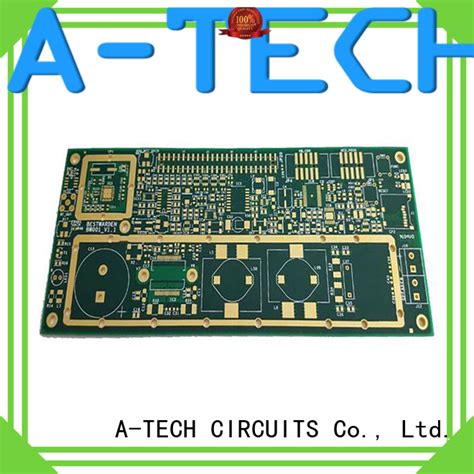Understanding the Factors That Affect PCB Price
Several key factors contribute to the overall cost of producing a PCB. These include:
Materials
The materials used in PCB manufacturing, such as the substrate (typically FR-4), copper foil, solder mask, and silkscreen, can significantly impact the final price. Higher-quality materials or specialized substrates, like high-frequency or high-temperature materials, will generally increase the cost.
Board Size and Complexity
The size and complexity of a PCB design directly influence its production cost. Larger boards require more material and processing time, while complex designs with dense component placement, fine-pitch traces, or multiple layers will also drive up costs.
Layer Count
The number of layers in a PCB is another crucial factor in determining its price. Each additional layer increases the complexity of the manufacturing process and requires more materials, resulting in higher costs. The table below illustrates the typical price differences based on layer count:
| Layer Count | Relative Price |
|---|---|
| 1-2 Layers | 1x |
| 4 Layers | 1.5x – 2x |
| 6 Layers | 2x – 3x |
| 8+ Layers | 3x+ |
Quantity
The quantity of PCBs ordered can significantly affect the unit price. Larger order quantities often benefit from economies of scale, as the fixed costs of setting up the production process are spread across more units. This table shows the typical price breaks based on order quantity:
| Quantity | Relative Price per Unit |
|---|---|
| 1-10 | 1x |
| 11-100 | 0.8x – 0.9x |
| 101-500 | 0.6x – 0.8x |
| 501-1000 | 0.5x – 0.7x |
| 1000+ | 0.4x – 0.6x |
Lead Time
The lead time, or the time required to produce and deliver the PCBs, can also impact the price. Shorter lead times often come with a price premium, as they may require expedited processing or shipping.
Strategies for Controlling PCB Price
Now that we understand the factors that influence PCB price, let’s explore some strategies for controlling these costs:
Design Optimization
One of the most effective ways to control PCB price is through design optimization. By working closely with your PCB design team, you can identify opportunities to simplify the design, reduce layer count, or optimize component placement. This can help minimize material costs and streamline the manufacturing process.
Material Selection
Carefully selecting the materials used in your PCB can also help control costs. While high-end materials may be necessary for certain applications, using standard materials whenever possible can help keep prices in check. Work with your PCB manufacturer to identify cost-effective material options that meet your performance requirements.
Order Quantity Optimization
As we saw earlier, order quantity can significantly affect PCB unit price. By carefully planning your production runs and ordering in optimal quantities, you can take advantage of price breaks and minimize overall costs. Consider factors like product life cycle, demand forecasting, and inventory management when determining your order quantities.
Vendor Selection
Choosing the right PCB manufacturer is crucial for controlling costs and ensuring quality. Look for vendors with a proven track record of delivering high-quality PCBs at competitive prices. Consider factors like their manufacturing capabilities, quality control processes, and customer support when making your selection.
Long-Term Partnerships
Establishing long-term partnerships with your PCB manufacturer can also help control costs over time. By building a strong relationship and providing consistent business, you may be able to negotiate better pricing, secure priority scheduling, or access value-added services.
Frequently Asked Questions (FAQ)
-
Q: How much does a typical PCB cost?
A: The cost of a PCB can vary widely depending on factors like size, complexity, layer count, and quantity. A simple, single-layer PCB may cost less than $1 per unit in large quantities, while a complex, multi-layer board may cost several dollars or more per unit. -
Q: How can I reduce the cost of my PCB design?
A: To reduce the cost of your PCB design, consider strategies like design optimization (simplifying the design, reducing layer count, optimizing component placement), material selection (using cost-effective materials that meet your performance requirements), and order quantity optimization (taking advantage of price breaks for larger order quantities). -
Q: What is the minimum order quantity for PCBs?
A: The minimum order quantity (MOQ) for PCBs can vary depending on the manufacturer and the specific design. Some manufacturers may offer low MOQs (even as low as one unit) for prototyping or small-scale production, while others may require larger minimum quantities for cost-effective production. -
Q: How long does it typically take to produce a batch of PCBs?
A: The lead time for PCB production can range from a few days to several weeks, depending on factors like design complexity, order quantity, and manufacturer workload. Many manufacturers offer expedited services for an additional fee, which can reduce lead times to a few days or even hours in some cases. -
Q: How can I ensure the quality of my PCBs while controlling costs?
A: To ensure the quality of your PCBs while controlling costs, work with a reputable PCB manufacturer that has a proven track record of delivering high-quality products. Look for manufacturers with robust quality control processes, experienced staff, and advanced manufacturing capabilities. Building a long-term partnership with your chosen manufacturer can also help ensure consistent quality and competitive pricing over time.

Conclusion
Controlling PCB Board price is essential for managing production costs and maintaining profitability in today’s competitive electronics industry. By understanding the factors that influence PCB price and implementing strategies like design optimization, material selection, order quantity optimization, and vendor selection, you can effectively control costs without sacrificing quality or functionality.
Remember, partnering with a reputable PCB manufacturer and fostering long-term relationships can also play a crucial role in managing costs and ensuring the success of your projects. With careful planning and execution, you can navigate the complex landscape of PCB pricing and deliver high-quality, cost-effective products to your customers.

No responses yet